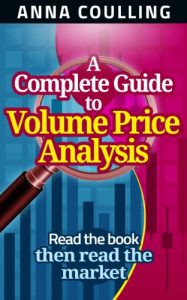Volume - love it or hate it?
Here in the UK we have a product called Marmite. It is a deeply divisive food, which you either love or hate. Those who love it, cannot understand how anyone could live without it - and of course, the opposite is true for those who hate it!
This sentiment could be applied to volume as a trading indicator. In other words, you are likely to fall into one of two camps. You either believe it works, or you don't. It really is that simple. There is no halfway house here!
You can be lucky too!
I make no bones about the fact that I believe I was lucky in starting my own trading journey using volume. To me it just made sense, and the logic of what it revealed was inescapable. And for me, the most powerful reason is very simple. Volume is a rare commodity in trading - a leading indicator. The second, and only other leading indicator, is price. Everything else is lagged.
It's a simple problem...
As traders, investors or speculators, all we are trying to do is to forecast where the market is heading next. Is there any better way than to use the only two leading indicators we have at our disposal, namely volume and price?
..And such a powerful solution
In isolation each tells us very little. After all, volume is just that, no more no less. A price is a price. However, combine these two forces together, and the result is a powerful analytical approach to forecasting market direction.
It was good enough for them!
However, as I say at the start of the book, there is nothing new in trading, and the analysis of volume has been around for over 100 years. After all, this is where the iconic traders started. People like Charles Dow, Jesse Livermore, Richard Wyckoff, and Richard Ney. All they had was the ticker tape, from which they read the price, and the number of shares traded. In other words, Volume Price Analysis (VPA), short and simple.
Is this book for me?
The book has been written for traders who have never come across this methodology, and for those who have some knowledge, and perhaps wish to learn a little more. It is not revolutionary, or innovative, but just simple sound common sense, combined with logic.






